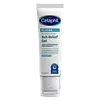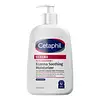What's inside
What's inside
 Key Ingredients
Key Ingredients

 Benefits
Benefits

 Concerns
Concerns

No concerns
 Ingredients Side-by-side
Ingredients Side-by-side

Water
Skin ConditioningPropanediol
SolventC13-15 Alkane
SolventGlycerin
HumectantLauryl Lactate
EmollientPhenoxyethanol
PreservativeCarbomer
Emulsion StabilisingArginine
MaskingAvena Sativa Kernel Flour
AbrasiveSodium Gluconate
Skin ConditioningSodium PCA
HumectantButylene Glycol
HumectantPentylene Glycol
Skin ConditioningXanthan Gum
EmulsifyingEthylhexylglycerin
Skin ConditioningOphiopogon Japonicus Root Extract
Skin ConditioningHydroxyphenyl Propamidobenzoic Acid
Skin ConditioningSodium Hydroxide
BufferingMaltodextrin
AbsorbentCeramide NP
Skin ConditioningAscorbyl Palmitate
AntioxidantTocopherol
AntioxidantWater, Propanediol, C13-15 Alkane, Glycerin, Lauryl Lactate, Phenoxyethanol, Carbomer, Arginine, Avena Sativa Kernel Flour, Sodium Gluconate, Sodium PCA, Butylene Glycol, Pentylene Glycol, Xanthan Gum, Ethylhexylglycerin, Ophiopogon Japonicus Root Extract, Hydroxyphenyl Propamidobenzoic Acid, Sodium Hydroxide, Maltodextrin, Ceramide NP, Ascorbyl Palmitate, Tocopherol
Colloidal Oatmeal 1%
AbsorbentWater
Skin ConditioningGlycerin
HumectantCaprylic/Capric Triglyceride
MaskingHelianthus Annuus Seed Oil
EmollientPentylene Glycol
Skin ConditioningButyrospermum Parkii Butter
Skin ConditioningCyclopentasiloxane
EmollientCetearyl Alcohol
EmollientSorbitol
HumectantBehenyl Alcohol
EmollientGlyceryl Stearate
EmollientCetyl Alcohol
EmollientTocopheryl Acetate
AntioxidantArginine
MaskingNiacinamide
SmoothingGlyceryl Stearate Citrate
EmollientSodium Polyacrylate
AbsorbentDisodium Ethylene Dicocamide PEG-15 Disulfate
CleansingCaprylyl Glycol
EmollientCeteareth-20
CleansingSodium PCA
HumectantPanthenol
Skin ConditioningCitric Acid
BufferingAllantoin
Skin ConditioningDimethiconol
EmollientOphiopogon Japonicus Root Extract
Skin ConditioningDisodium EDTA
Maltodextrin
AbsorbentSodium Hyaluronate
HumectantCeramide NP
Skin ConditioningPantolactone
HumectantColloidal Oatmeal 1%, Water, Glycerin, Caprylic/Capric Triglyceride, Helianthus Annuus Seed Oil, Pentylene Glycol, Butyrospermum Parkii Butter, Cyclopentasiloxane, Cetearyl Alcohol, Sorbitol, Behenyl Alcohol, Glyceryl Stearate, Cetyl Alcohol, Tocopheryl Acetate, Arginine, Niacinamide, Glyceryl Stearate Citrate, Sodium Polyacrylate, Disodium Ethylene Dicocamide PEG-15 Disulfate, Caprylyl Glycol, Ceteareth-20, Sodium PCA, Panthenol, Citric Acid, Allantoin, Dimethiconol, Ophiopogon Japonicus Root Extract, Disodium EDTA, Maltodextrin, Sodium Hyaluronate, Ceramide NP, Pantolactone
Ingredients Explained
These ingredients are found in both products.
Ingredients higher up in an ingredient list are typically present in a larger amount.
Arginine is an amino acid that is important for human development. Your body uses is it to produce hair keratin and skin collagen.
As a cosmetic ingredient, Arginine has antioxidant properties and can also help repair damaged skin. This ingredient is derived either synthetically or from animals.
Arginine isn't fungal acne safe when used in the presence of other lipids (fats, fatty acids, oils, esters, etc). Oils and fats occur naturally within the skin, so take caution when using Arginine if you're prone to fungal acne.
Learn more about ArginineCeramide NP is a type of ceramide and formally known as ceramide 3.
Ceramides are intercellular lipids naturally found in our skin that bonds dead skin cells together to create a barrier. They are known for their ability to hold water and thus are a great ingredient for dry skin.
Ceramides are an important building block for our skin barrier. A stronger barrier helps the skin look more firm and hydrated. By bolstering the skin ceramides act as a barrier against irritating ingredients. This can help with inflammation as well.
If you would like to eat ceramides, sweet potatoes contain a small amount.
Read more about other common types of ceramides here:
Ceramide AP
Ceramide EOP
Glycerin is already naturally found in your skin. It helps moisturize and protect your skin.
A study from 2016 found glycerin to be more effective as a humectant than AHAs and hyaluronic acid.
As a humectant, it helps the skin stay hydrated by pulling moisture to your skin. The low molecular weight of glycerin allows it to pull moisture into the deeper layers of your skin.
Hydrated skin improves your skin barrier; Your skin barrier helps protect against irritants and bacteria.
Glycerin has also been found to have antimicrobial and antiviral properties. Due to these properties, glycerin is often used in wound and burn treatments.
In cosmetics, glycerin is usually derived from plants such as soybean or palm. However, it can also be sourced from animals, such as tallow or animal fat.
This ingredient is organic, colorless, odorless, and non-toxic.
Glycerin is the name for this ingredient in American English. British English uses Glycerol/Glycerine.
Learn more about GlycerinMaltodextrin is a polysaccharide. It is derived from starch such as rice, corn, wheat, or potato starch.
In food, Maltodextrin is used to improve the texture and thicken a product. Due to its structure, it can help create a gel texture. As an emulsion stabilizer, it helps keep the ingredients in a product together.
As a polysaccharide, Maltodextrin has moisturizing properties. Polysaccharides are a type of carbohydrate. The top layer of skin uses polysaccharides to retain water, keeping the skin hydrated.
Maltodextrin is water soluble and has a sweet taste.
Learn more about MaltodextrinWe don't have a description for Ophiopogon Japonicus Root Extract yet.
Pentylene glycol is typically used within a product to thicken it. It also adds a smooth, soft, and moisturizing feel to the product. It is naturally found in plants such as sugar beets.
The hydrophilic trait of Pentylene Glycol makes it a humectant. As a humectant, Pentylene Glycol helps draw moisture from the air to your skin. This can help keep your skin hydrated.
This property also makes Pentylene Glycol a great texture enhancer. It can also help thicken or stabilize a product.
Pentylene Glycol also acts as a mild preservative and helps to keep a product microbe-free.
Some people may experience mild eye and skin irritation from Pentylene Glycol. We always recommend speaking with a professional about using this ingredient in your routine.
Pentylene Glycol has a low molecular weight and is part of the 1,2-glycol family.
Learn more about Pentylene GlycolSodium PCA is the sodium salt of pyroglutamic acid. It is naturally occurring in our skin's natural moisturizing factors where it works to maintain hydration.
The PCA stands for pyrrolidone carboxylic acid, a natural amino acid derivative.
This ingredient has skin conditioning, anti-inflammatory, and humectant properties. Humectants help hydrate your skin by drawing moisture from the air. This helps keep your skin moisturized.
Learn more about Sodium PCAWater. It's the most common cosmetic ingredient of all. You'll usually see it at the top of ingredient lists, meaning that it makes up the largest part of the product.
So why is it so popular? Water most often acts as a solvent - this means that it helps dissolve other ingredients into the formulation.
You'll also recognize water as that liquid we all need to stay alive. If you see this, drink a glass of water. Stay hydrated!
Learn more about Water